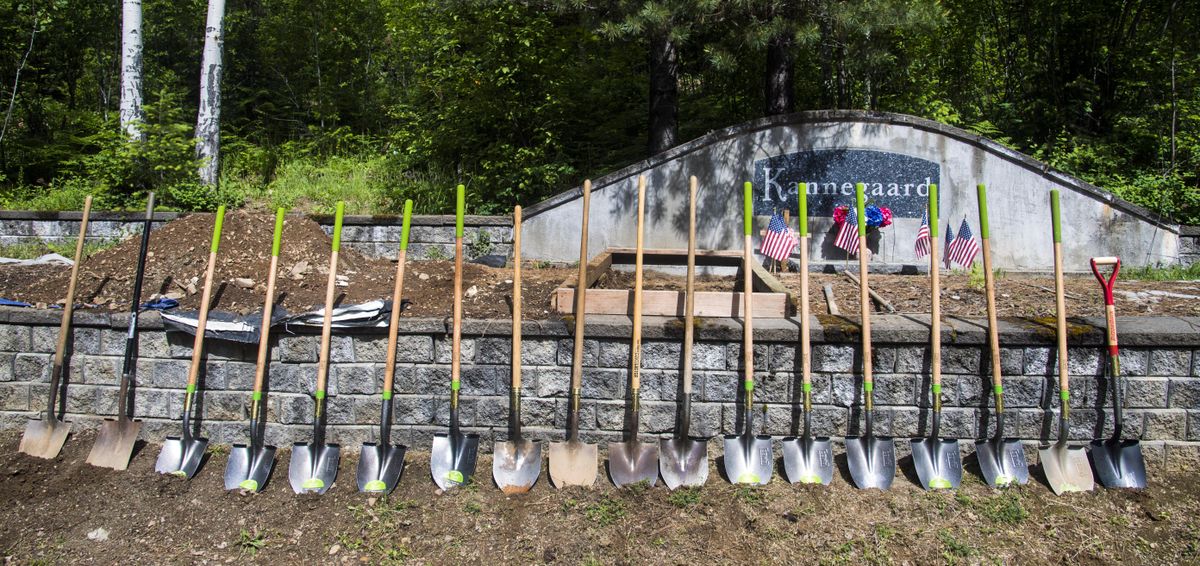Burying gold in the Silver Valley: Mining family returns to Wallace to dig brother’s grave

With deep roots to the mining industry of the Silver Valley, the Kannegaard family is no stranger to picks and shovels. And when they see a job that needs to be done, it’s in the family’s nature to do it themselves to make sure it’s done right.
So when Andy Kannegaard died in 1995, it was only natural that his children would gather in his hometown of Wallace, Idaho to dig his grave themselves.
And now, 22 years later, they have returned to the same spot to break ground on the oldest sibling’s grave.
Ken Kannegaard died of thyroid cancer on May 27. At 66 years old, he had a long career in the mining, cement manufacturing and timber industries, where he specialized in health and safety.
“If Kenny were here, he’d be saying ‘Woah, woah, woah – what are you doing?’” his brother, John Kannegard, joked as the siblings dug.
Ken is survived by his wife Jacque and two children, two sisters and four brothers. Two of his brothers likewise work in mining. In fact, most of the family has ties to mining in the Silver Valley in one way or another.
A Spokesman-Review article from 1995 cites Andy’s five sons joking that they “can’t visit the Silver Valley without someone either buying them a drink or telling them to go to hell.”
John and Mark, twins and the youngest of the brothers, would have gone into mining if it were possible, according to the article. But times were tough and their father couldn’t hire them while he was laying others off. The two went into the Air Force instead.
Dozens of older graves dot the Miner’s Union Cemetery, tucked away in a hilly part of the woods near Wallace. Mark had noticed some of the tombs coming out of the ground, and he said it was important to him that his brother and father’s graves be dug the right way.
“We have a bunch of miners, so they know how to do it without falling in,” joked one of the sisters, Jillene Kannegaard.
As a part of their father’s burial ritual, the Kennegaard brothers had brass plates with his name and date of birth and death engraved on them. They had several more made for Ken’s burial.
Ken’s children, Kendra and Keiffer, were the first of almost 40 family members present to sink their shovels in the soil and start digging. They held each other in a long embrace afterward.
Kendra said her father was the greatest man she’s ever known. The two were very close. When she had to start using a wheelchair, her dad constructed a device to help her get into vans.
Ken liked to teach. He taught high school and middle school wrestling for 23 years in Santa Cruz, California. He even started the high school’s first girls’ wrestling team.
His younger brothers John and Mark remember him teaching them how to tie knots and ride a motorcycle.
Ken was also a traditionalist. He had taken over a lot of the family-organizing duties since his father’s death, and he had requested that the family dig his grave next to his father’s.
It was a tradition that stemmed from the same values the family learned in the mining industry: integrity, hard work and a desire to accomplish things.
“It binds us a little differently than everyone else,” Marc said.